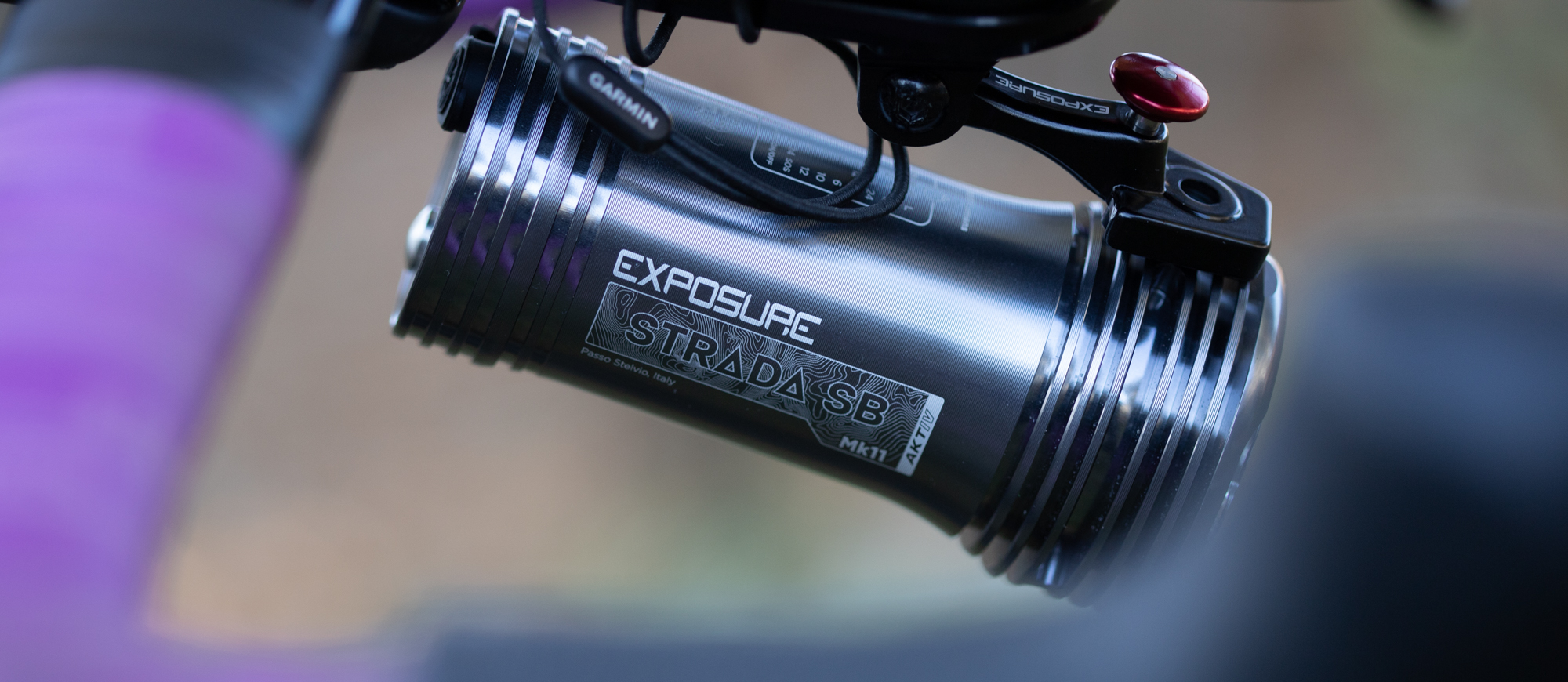Cyclingnews Verdict
The Exposure Strada Mk11 SB AKTiv is an expensive light but it’s beautifully made, has a huge battery, and tells you what’s happening in multiple ways. When you are too tired to think straight this is a light you won’t mess up.
Pros
- +
Comes with a wired remote
- +
Gorgeous fully-machined aluminium body
- +
Optional support cells extend runtime
- +
AKTiv technology automatically dims the beam for cars
- +
Dual-beam pattern illuminates close and far ahead
- +
High-quality mounting
- +
Control scheme lets you set everything at home
Cons
- -
Expensive
- -
Non-standard charge port
- -
No listed correlation between lumens and burn time
You can trust Cyclingnews
There are a lot of uses for a light on the front of your bike. For some people, it's as simple as staying visible while getting home from work. For others, it's an occasional event that means starting or finishing in the dark. We have all of those uses covered in our list of the best bike lights so if any of that sounds like what you need, take a look. There is another use though and it's become a lot more popular over the last few years. Ultra-endurance racing means riding through the night and it takes a special kind of light to do it.
The light I placed on our list for that use is the Exposure Strada Mk11 SB AKTiv. Exposure is a British brand that seems to have found a place in the ultra-endurance community. While researching it, I found all three podium winners of the 2021 GBDuro had Exposure lights listed in their gear list. That's just one example but that's the kind of thing that deserves an explanation. The Strada Mk11 SB AKTiv is the latest version of the most feature-laden road light that Exposure makes. I haven't had a chance to attempt any racing with it but I did spend time testing to see what makes it special. If you are looking for the right light to get you through something truly gruelling, keep reading to see what makes this light special.
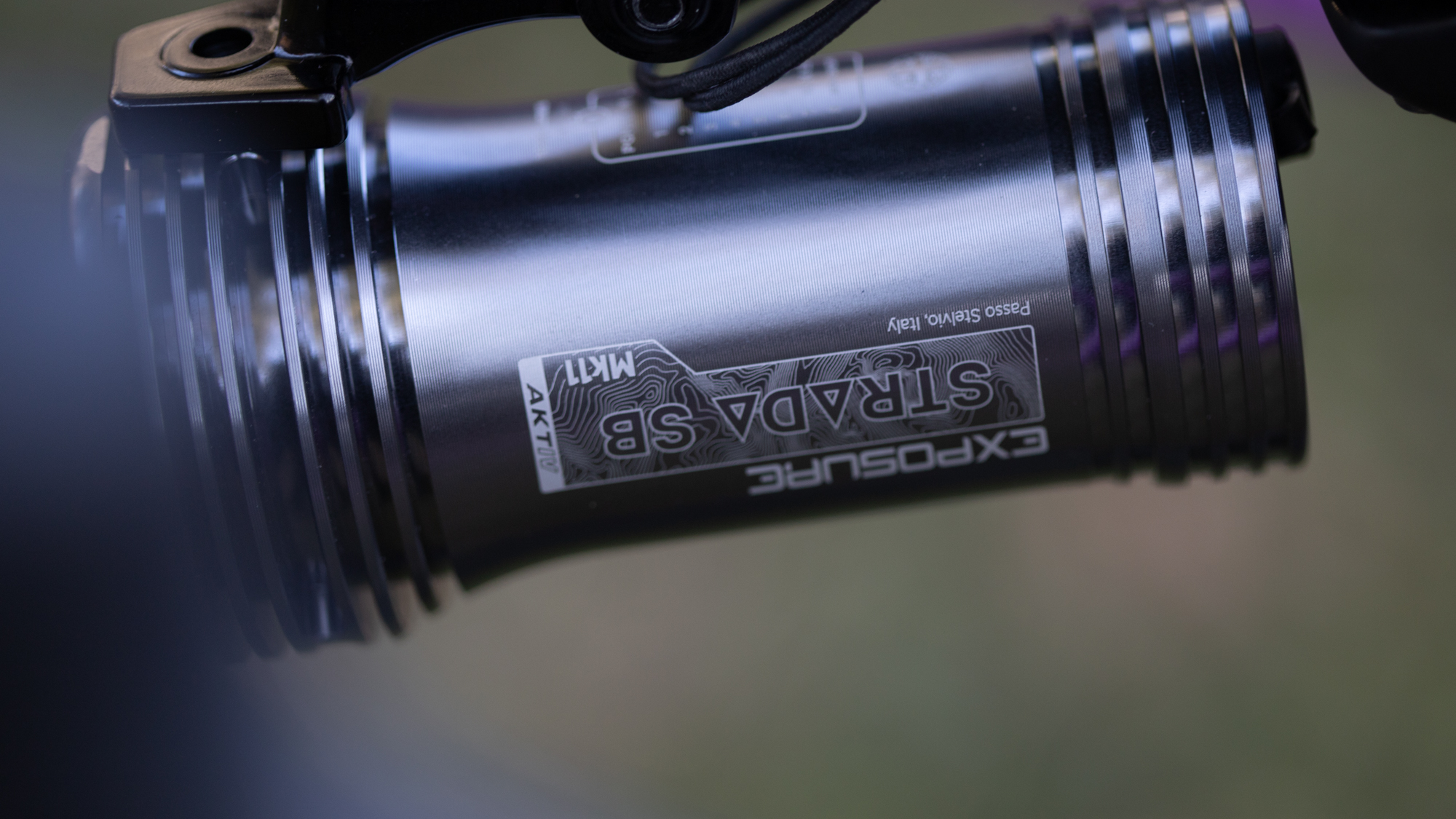
Design and aesthetics
How much thought have you given to the way your front bike light looks? Less powerful lights tend to be plastic with rubber buttons. As the size and power grows, they tend to switch to aluminium bodies. Black dominates no matter the light price point, or power, and rubber is the material of choice for the buttons. Then there's the Exposure light.
The Exposure Strada Mk11 SB AKTiv is a front light you will look at and take notice of. There's no way not to. As soon as you see it you can't help but dwell on the machined one-piece outer. Instead of black, there is a gunmetal colour that isn't quite the same as bare aluminium but certainly isn't painted on. The main body starts at the rear with a series of shallow cooling fins. The outer surface keeps the ridges left from the milling but there is a polished finish between the fins. The middle section goes without cooling fins before flaring towards the bulbs at the end. The end near the bulbs features deep channels between extensive cooling fins.
While the centre section lacks any cooling fins, it does have text marking the exact model. There are a few variations with similar names and modifiers on the Strada Mk11 base design. If there is an RS in the name, that stands for "Road Sport" and marks a 1300-lumen max brightness. Switching that to SB, or "Super Bright" ups that to 1600 lumens. Then there is the AKTiv moniker.
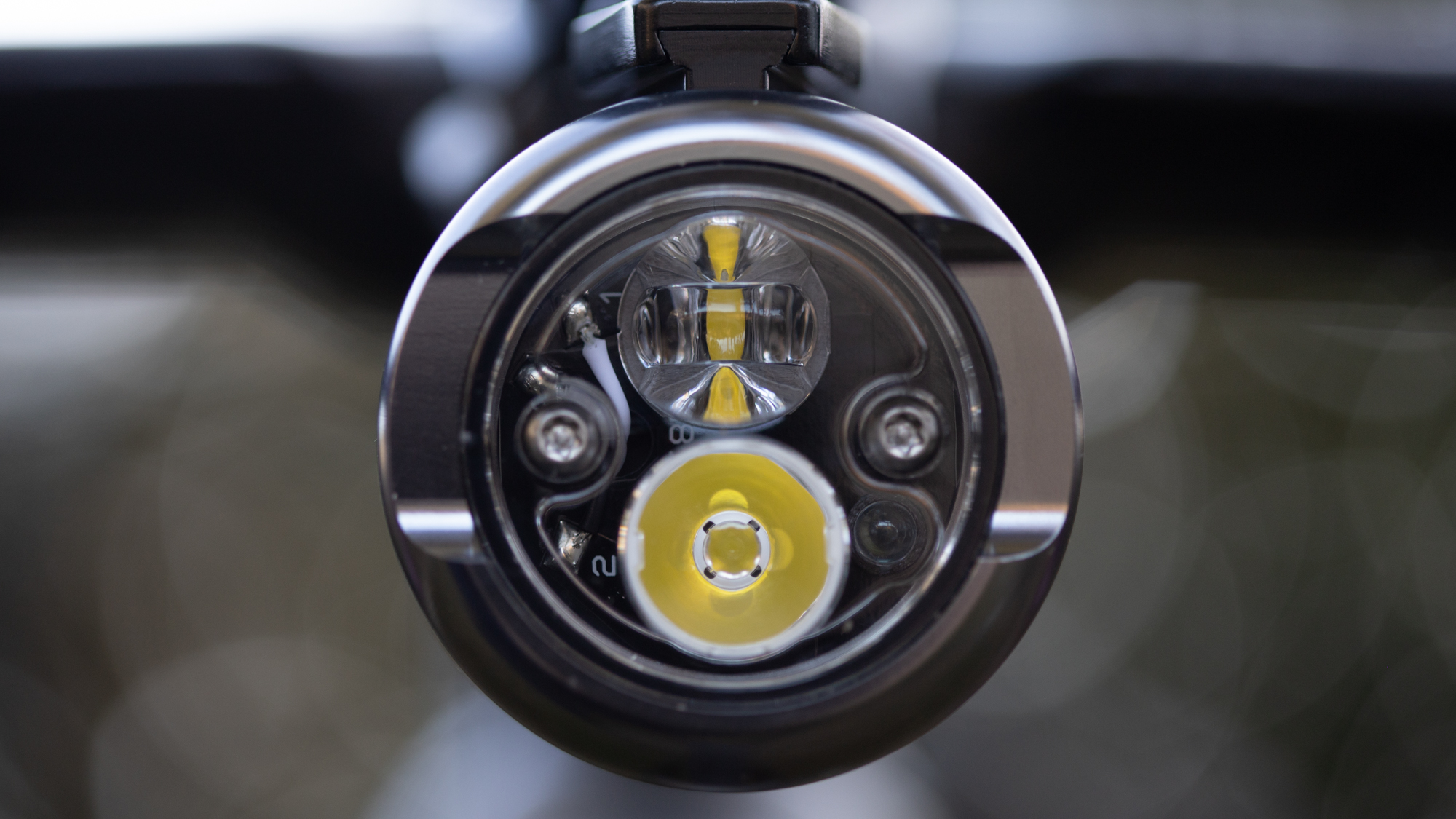
AKTiv is a technology that dims the light in response to a car's headlights. Fancy name aside, there's a light sensor in the front of the unit. Hit it with a sufficiently bright light and the power of the Strada drops. If you'd prefer not to have your light dim for cars, you can turn it off. Both the AKTiv lights and those without the feature do come with an, optionally used, wired remote to dim the lights manually.
There is also another trick to the centre section of the light body. The etched, not printed, model identifier on either side of the light sits in opposite directions. One is up and one is down. This is an indicator that the light design works in either direction you want to mount it and the mounting options support that as well.
The included mounting fits a round bar. There are spacer options for different sizes and it locks in place with a hex bolt. There is also an inexpensive two-prong action camera mount available. That one is perfect for under a variety of bike computers but it also opens up a whole realm of mounting options you can scour the internet for if you have a unique need.
Whichever you use, the mount is a triangle with angled edges. There's only one way to slide the light into the mount and only one way it comes out. This single-channel remains locked with a spring-loaded, metal, pin. Removing the light requires pulling the pin against the spring tension and then sliding the light backwards. Not that it matters much but the pull tab is another piece of beautiful aluminium this time in a red hue.
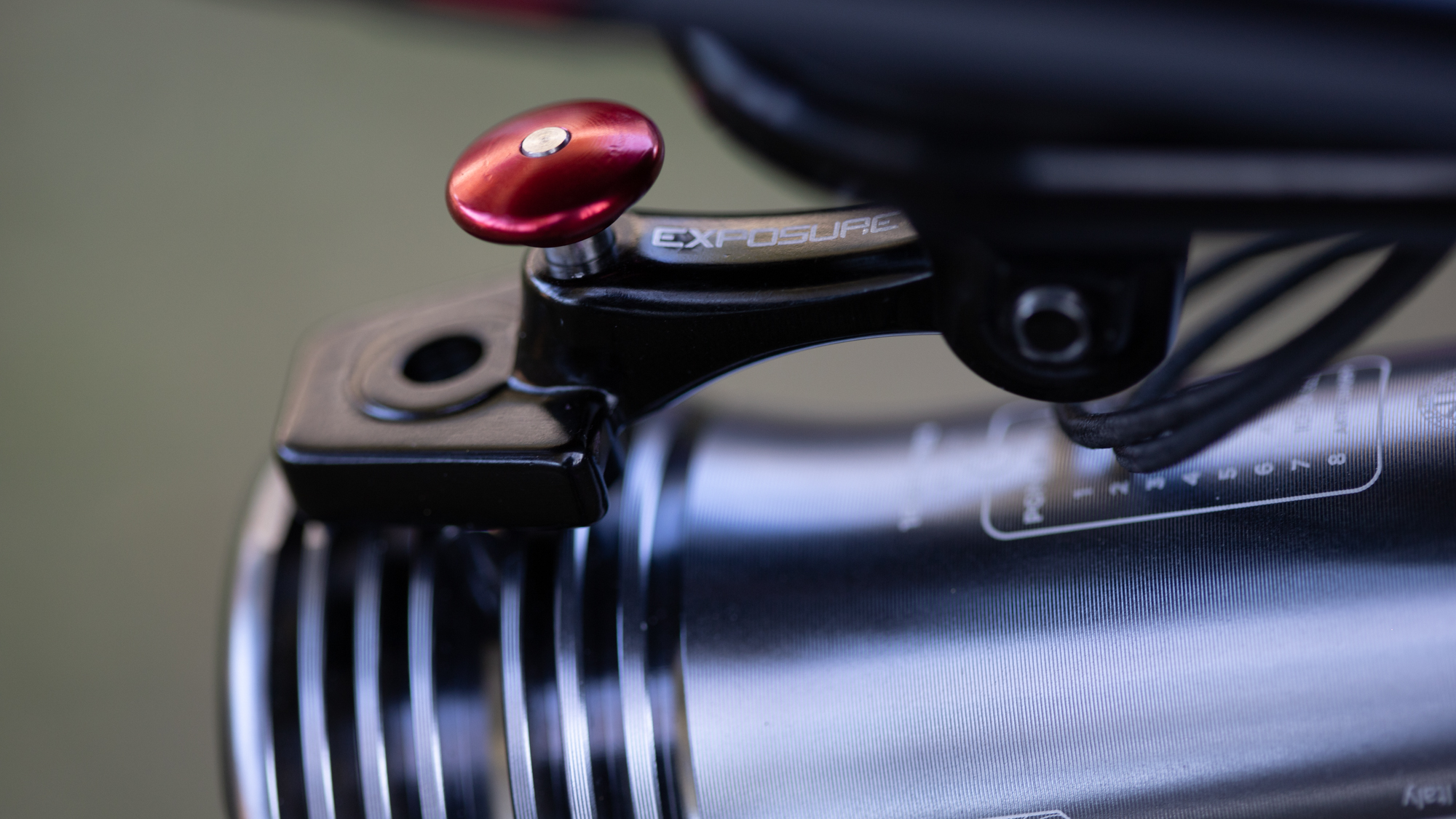
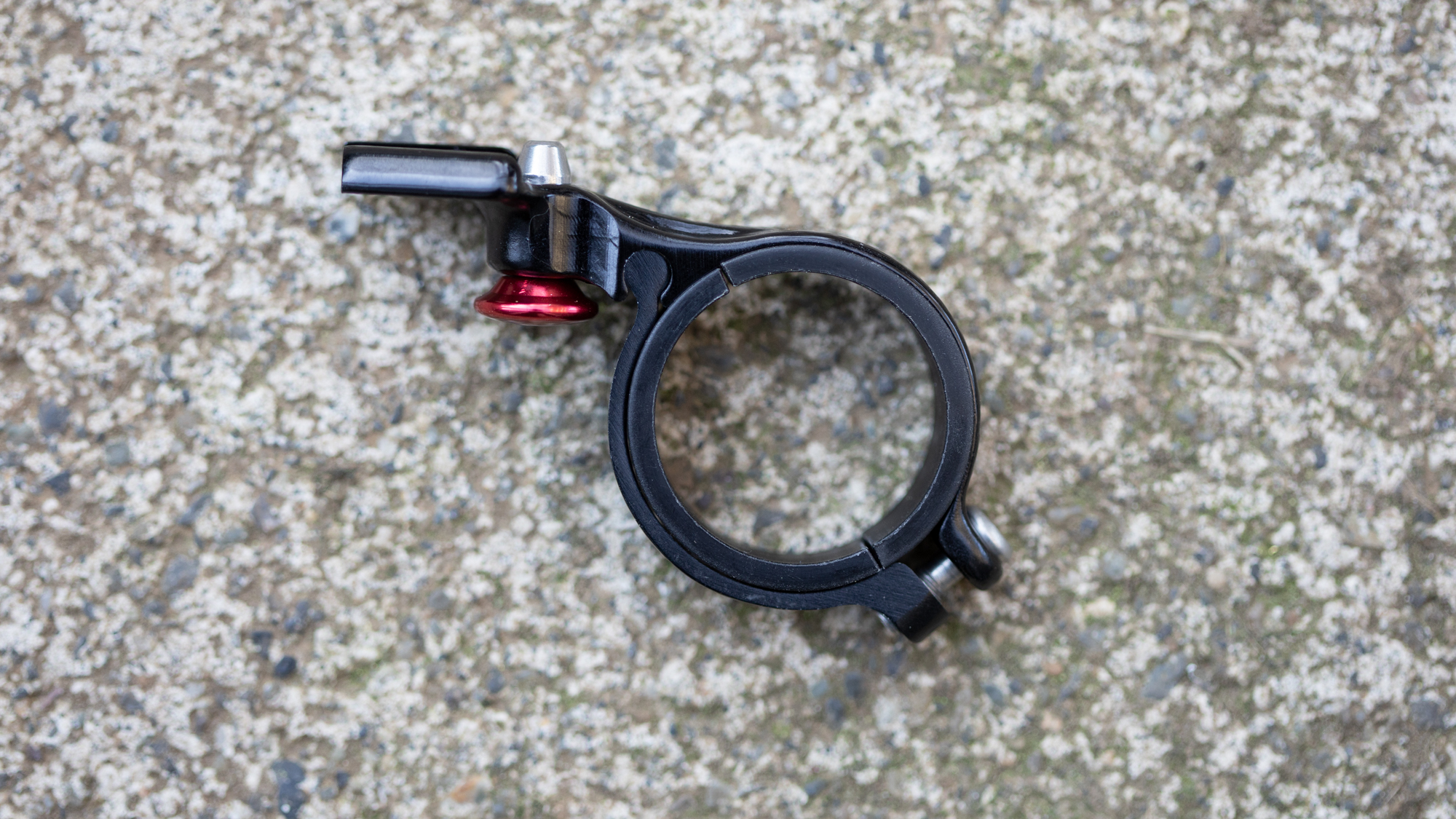
How the light works
It is unusual for me to break out another headline for a review of a light, but the Exposure light is different and understanding how it works takes some explanation. Exposure has a completely different way of approaching a light and it's unlike anything else I've come into contact with.
Exposure does list the basic numbers. This light puts out 1600 lumens at full power and has a 10,200 mAh Li-Ion battery that will sustain it for two hours at that power level. From there, the key statement is "Burn time and lumen output are directly proportional, if you double the run time, you halve the lumen output." That's your guidance for figuring out what you get across the seven programs that feature a mix of three, and sometimes two, power levels.
On the main barrel of the light is a key that shows the programs and the modes within them. Sitting at home you are going to want to pick what mode you want to use while riding. Nothing stops you from switching programs while riding but there is a method to this madness and it has a happy ending.
At the rear of the light is a clear cover showing an LED display and a single, metal, control button. Turning the light on takes a double press of the button but holding it down with the light off will put you into a program change mode. Cycle through the modes and pick which one you want available while riding. Once that is set, pressing the button with the light on will cycle between a high, medium, and low within that program.
The point of all this is to keep brain power and guessing to a minimum when you find yourself at the limit while also offering a ton of choices. When riding, each press of the button will show a coloured LED. Green for high, amber for medium, and red for low. The main display panel also shows the mode you are in and a countdown timer. In case you forget which program you are in, the display shows that when you turn the light on and if the light is upside down, the display swaps direction.
If you want an idea of power vs burn time, Exposure doesn't list that. It's not hard to figure out though. It just takes a bit of calculation and understanding. 1600 lumens at 2 hours is your base. From there if you have a six-hour run time, that's three times as long and conversely one-third of the power or roughly 530 lumens. For the first program, the last mode is a 12-hour burn time so six times the length and one-sixth of the power at about 267 lumens. Now, this isn't exact because according to Exposure, the LEDs are more efficient at lower power so the lumens go up a bit. It's enough to get you in the ballpark though.
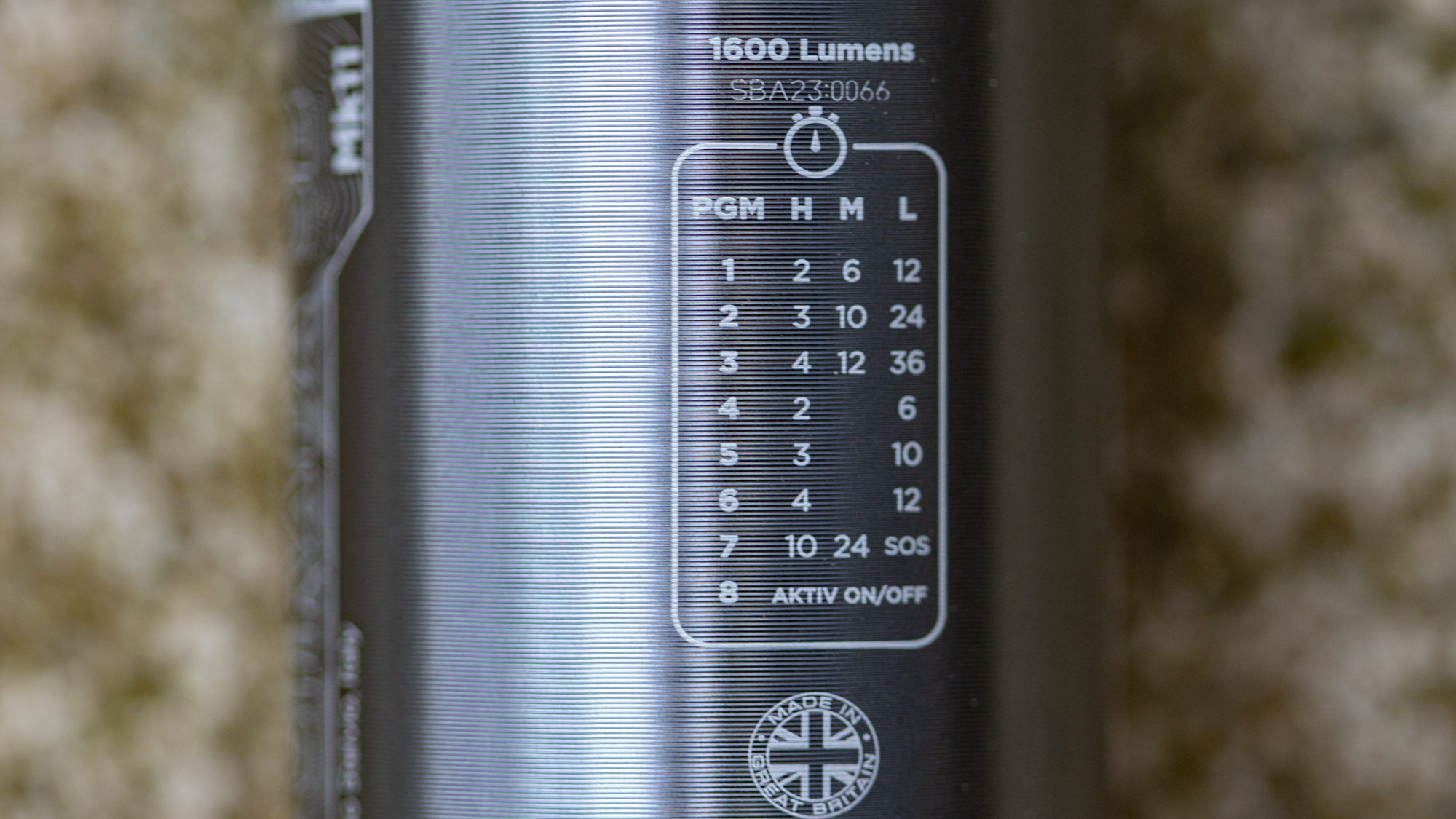
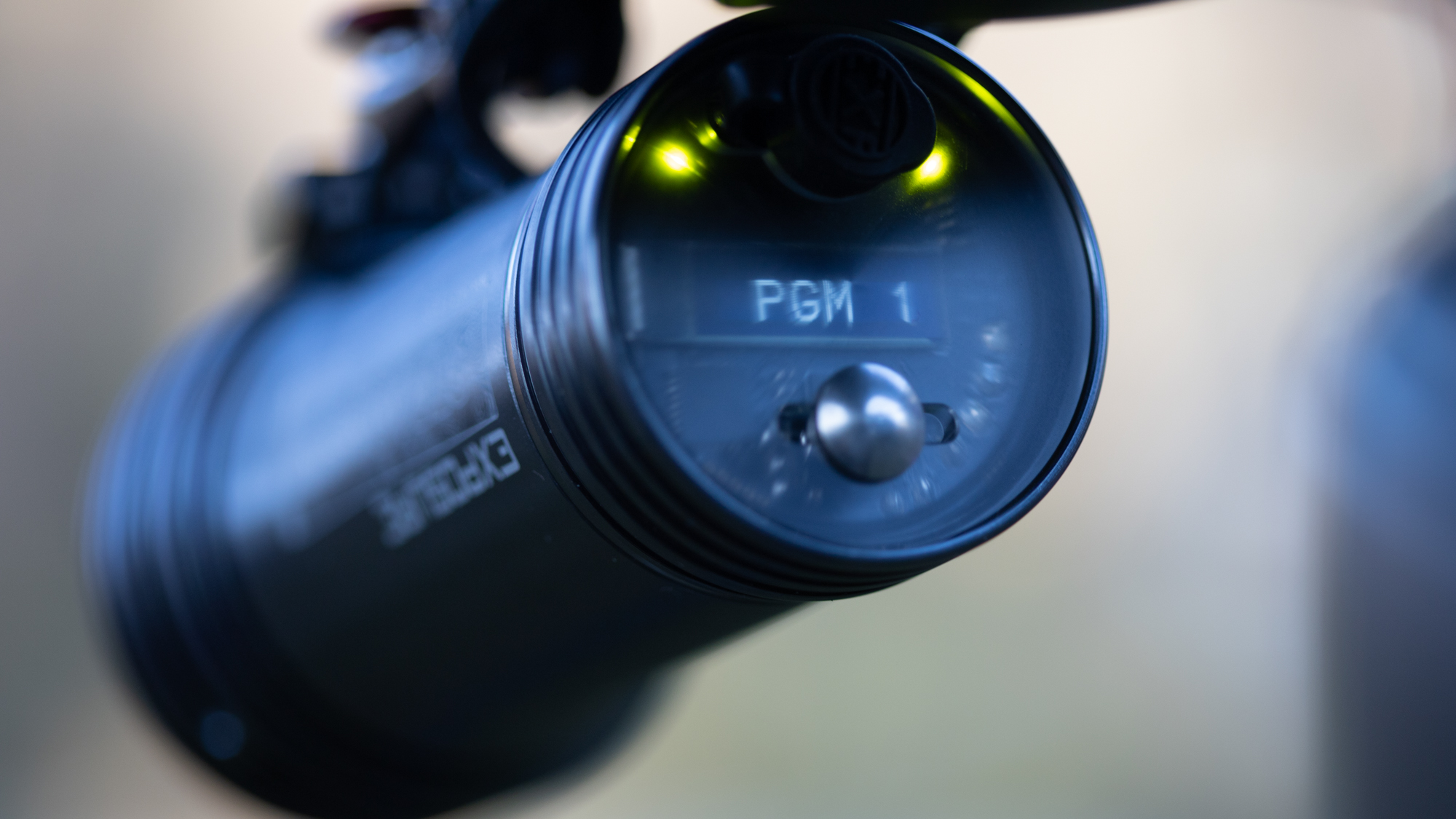
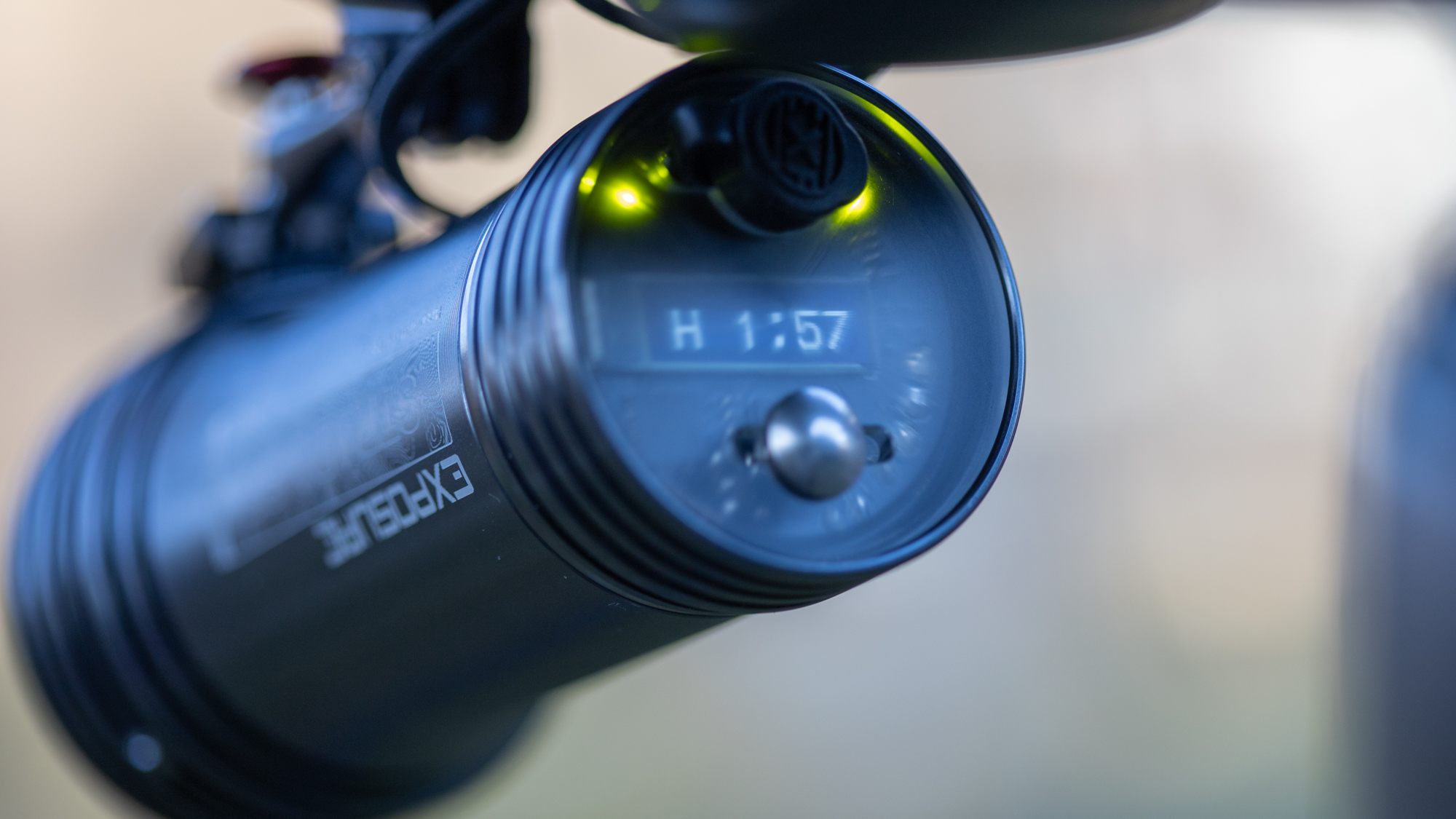
Performance
The more time I spent explaining the Exposure Strada Mk11 SB AKTiv the more complicated it seemed. The point is to balance options with simplicity but couldn't you drop a lot of complexity by limiting the programs available? Then I looked at the programs and started to think about dropping some of them. There isn't one I'd like to drop but at the same time, I love the idea of not having to click through them all to find what I want. You do have to spend some time practising and figuring out what works for you but the end result is something I like better than the competition.
I remember being 12 hours into a Rapha festive 500 ride and forgetting how to use my light. It was raining and I hadn't eaten nearly enough. As the sun went down my plan had been to use one light first on medium power. I couldn't remember how to turn the light on so I called it broken and switched to the other light. That one I got turned on but I couldn't decide which mode it was on. I knew I'd need it on medium to make it last but I kept cycling through the modes to decide if I was on medium or not. Turns out that riding along a highway in heavy rain it's tough to distinguish what mode a light is on. Exposure completely solves this problem.
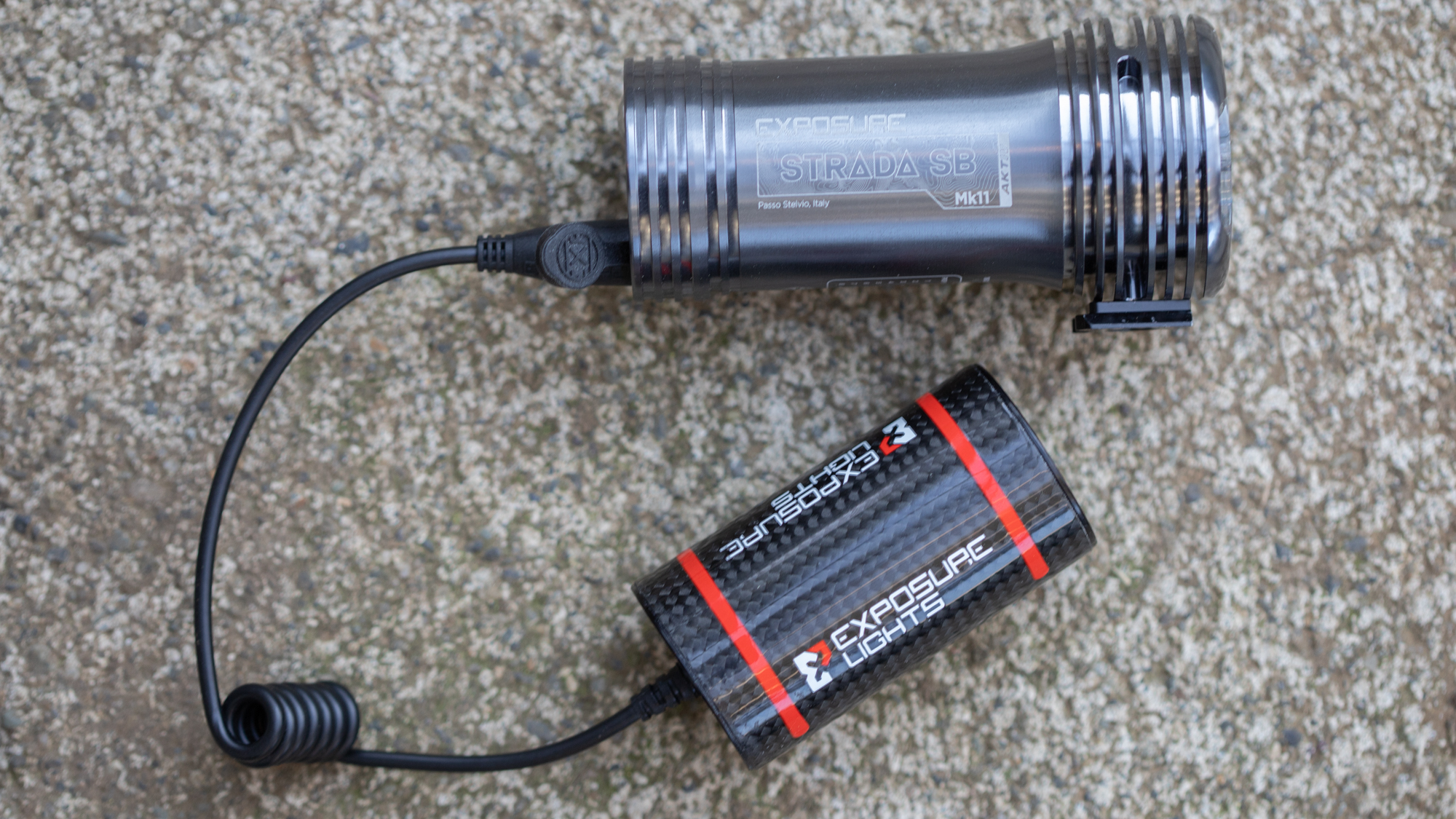
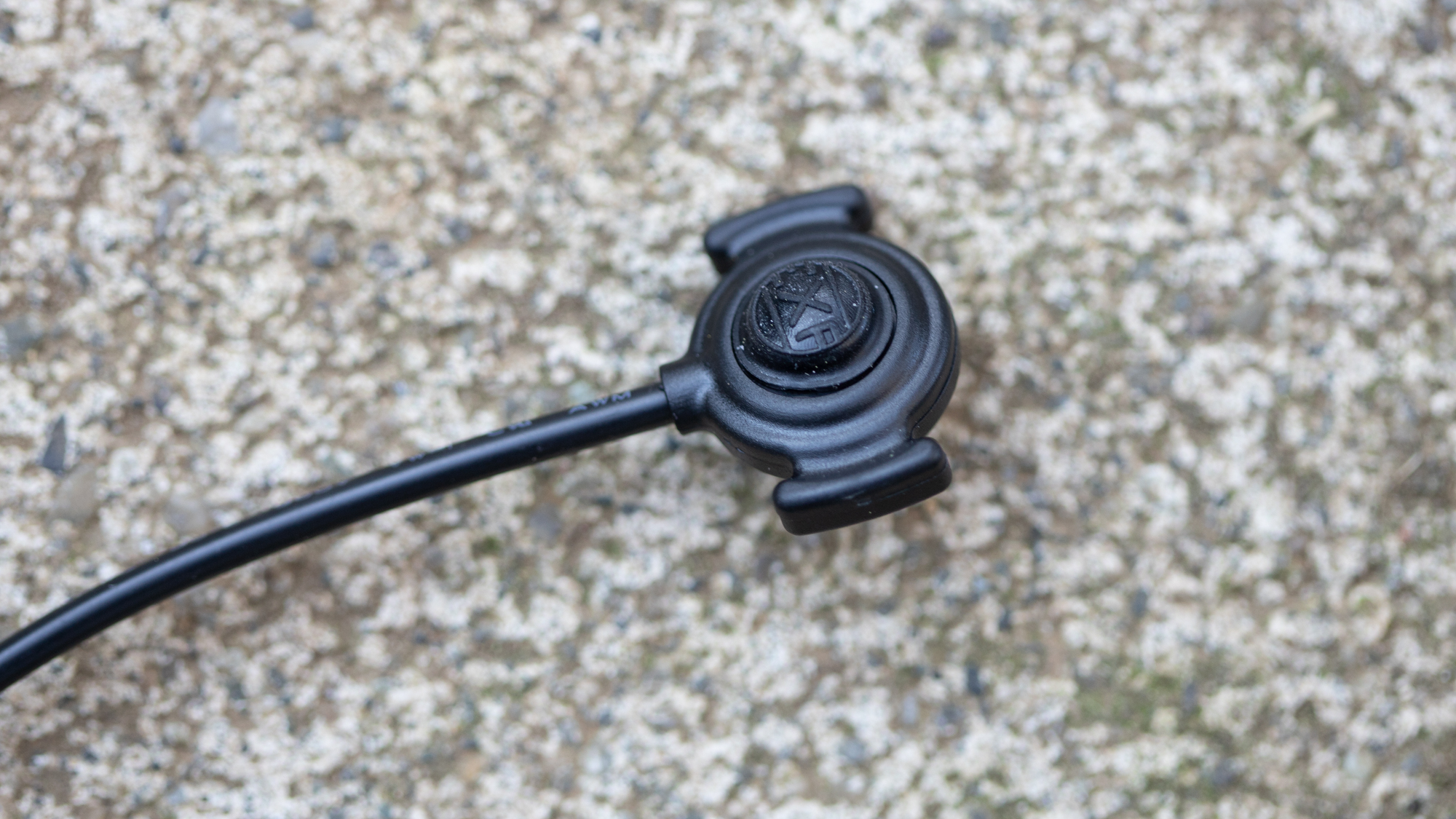
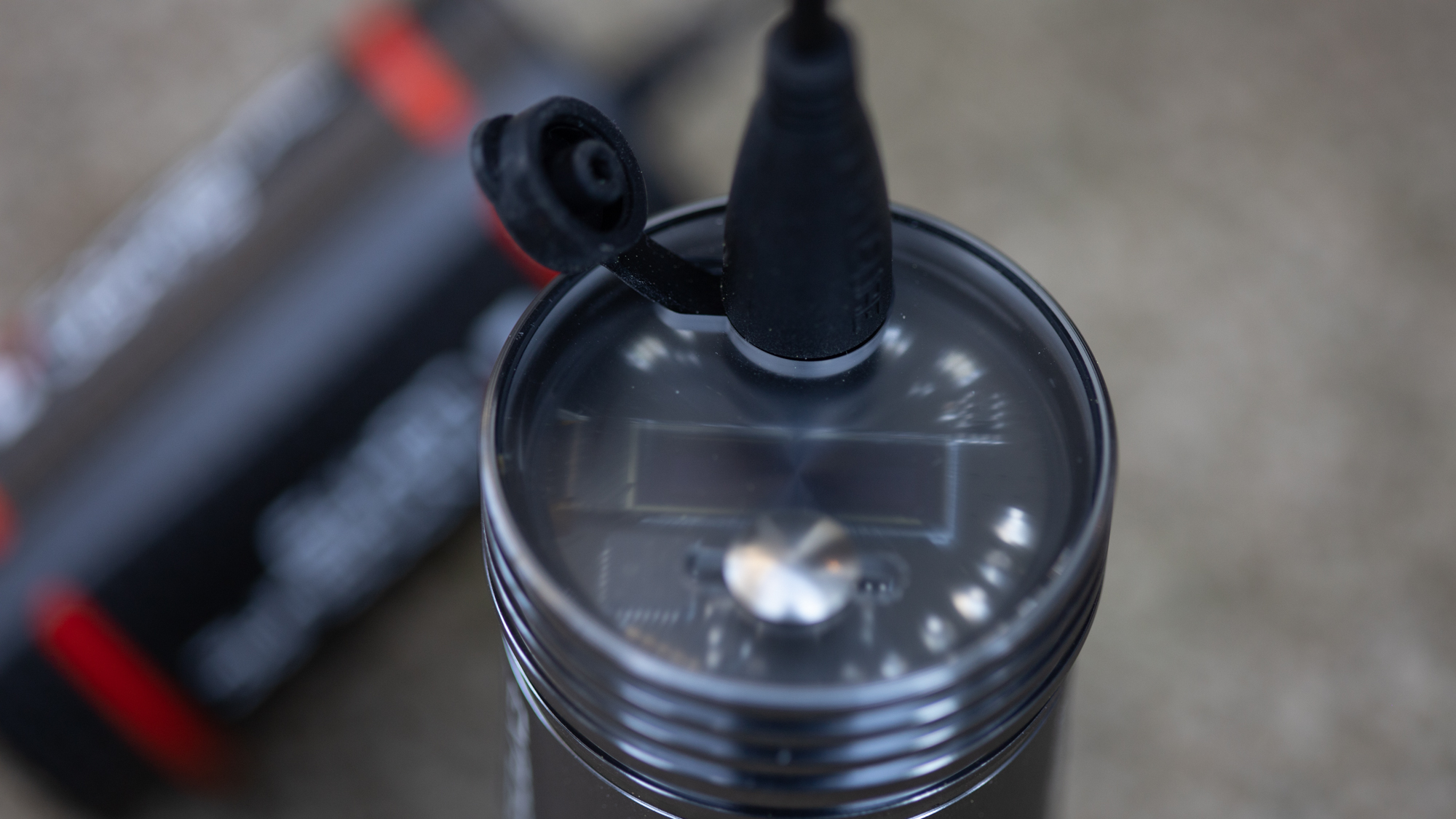
That back panel offers other advantages as well. The battery has options for supplementation. The charging port isn't USB, and that is unfortunate, but it's not proprietary either. What you'll find is a standard round DC port. You might not have extras around but they are easy to get. You can turn the port on as a backup battery for another device that connects with a DC to USB cable. You can also purchase backup batteries from Exposure with the largest 8.7 Ah option giving an additional 80% runtime and a rainproof connection.
What about the actual light quality though? The road-specific beam pattern on the Strada uses two different beams that combine. One is a typical round shape that stays centred without much width. The other has a letterbox shape that extends much farther from the centre. The effect of the two combined is a letterbox with a bright centre. The cutoff at the top and bottom is fairly sharp and the design is symmetrical so it works no matter which way up the light is mounted.
I tend to feel like light is light when riding at night. I have to admit though, there is a difference here. Adjust it so that the centre is where you want it. and there's noticeably more visibility at the sides. The AKTiv feature does work well but I turned it off after testing it. I've never had an issue with blinding cars and I can't imagine this light is the one that would cause it given the noticeable upper edge of the beam. It's there if you want it though.
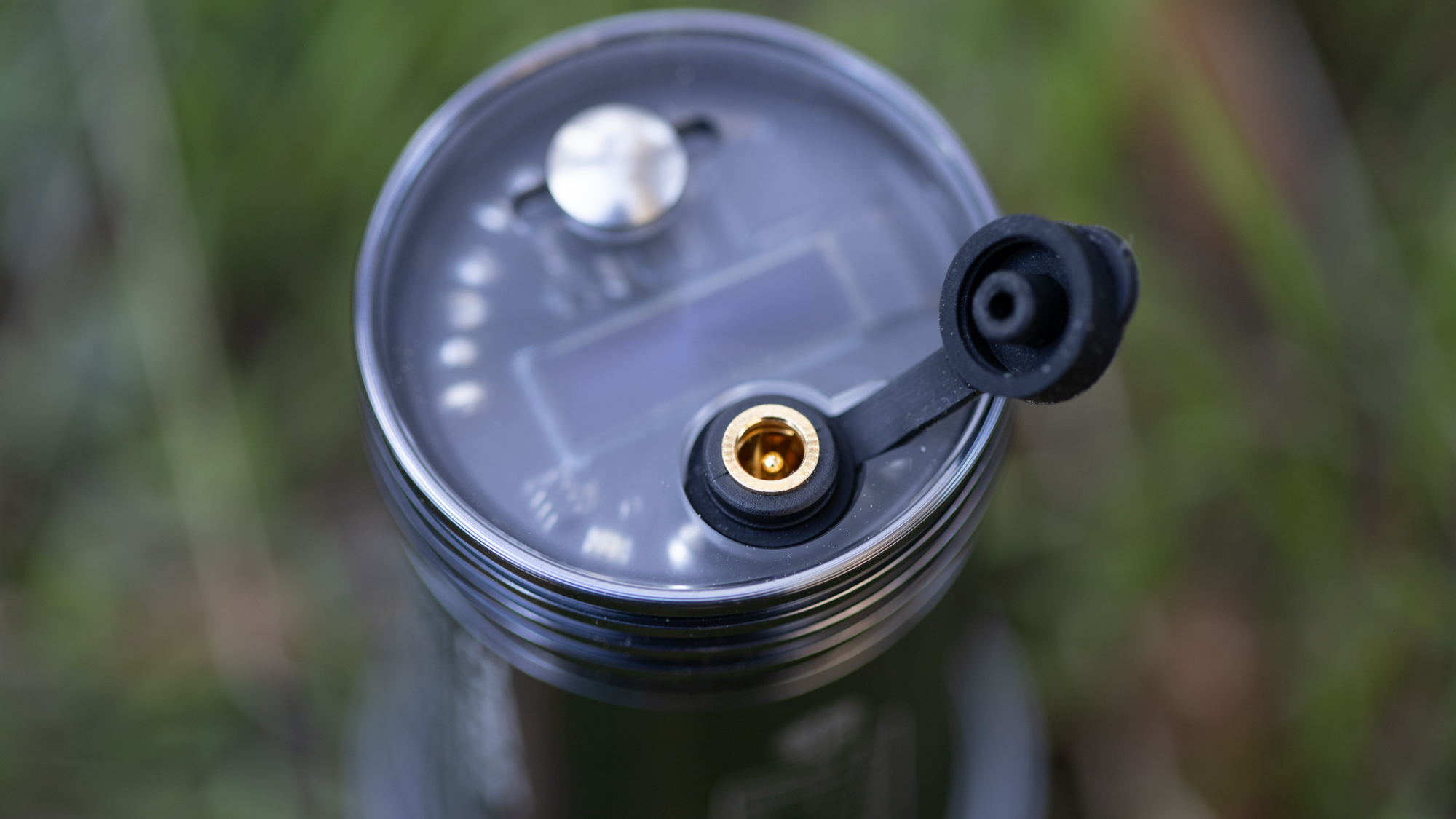
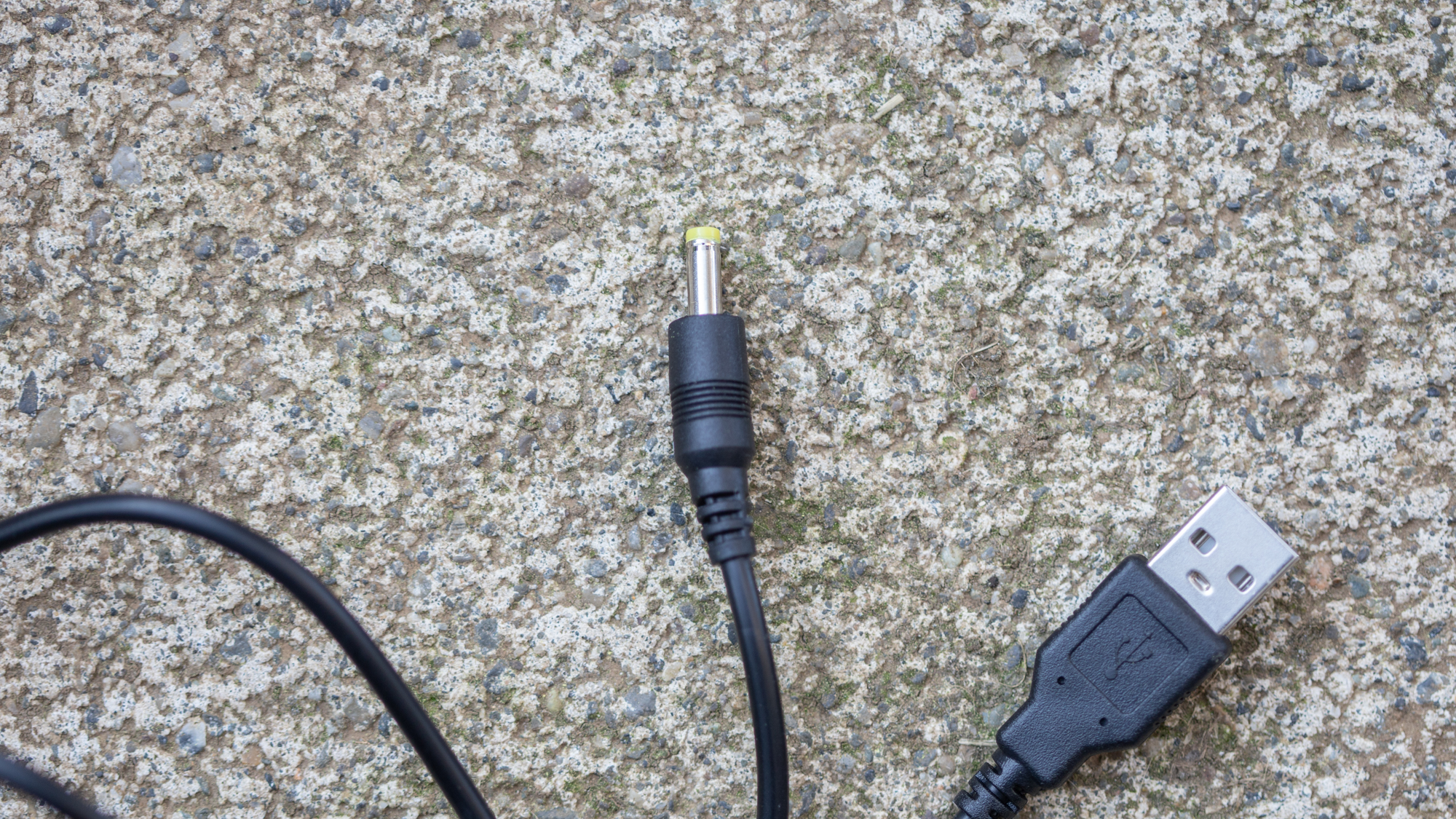
Verdict
The Exposure Strada Mk11 SB AKTiv isn't an everyday light. Survey reviews of other Exposure lights and you will find a lot of discussion about things like the difficulty of moving it between bikes. Those kinds of day-to-day useability issues just don't apply here. It's not super easy to move the mount between bikes but that's not what this light is for. When you want to try and ride for 24 hours then the features of this light start to make a lot more sense.
That doesn't mean it's perfect though. Although the DC power port works, there's no need for it. It's entirely possible to create a sealed connection with a USB-C cable and save everyone the hassle of dealing with something that isn't as common. As well thought out as the rest of the light is, requiring adapters doesn't make the same sense. The same basic thinking goes for the burn time vs power discussion. I did the research and helped you with the maths so that we can both understand how to calculate the desired runtime vs power. It doesn't make a ton of sense to require that though, Exposure could test the light and publish a burn time chart saving a bit of hassle.
The last big hurdle is the price. This light is very expensive and there's no getting around that. At the same time, it's not unexpected or even out of line for what you are getting. The difference between a premium product and a value product can sometimes feel small viewed through the lens of a spec sheet. Make no mistake though, the details add up and the Exposure Strada Mk11 SB AKTiv is a level above any other light I've ever touched. What you will want to consider is do you need a light like this for the riding you do?
| Design and mounting | It doesn’t get better. Milled from a solid piece of aluminium and all the mounting is rock solid. | 10/10 |
| Light quality | Shape and beam quality is excellent. Keeps it from feeling like riding in a tunnel and there’s a fairly tight cutoff. I would like to see a bit higher max lumens though. | 9/10 |
| Control Scheme | Options for everyone. Depending on your needs you could have less complexity but the trade-off would be someone else not getting what they need. | 7/10 |
| Battery life and charging | Burn time for the power is good but not the best and not using USB-C for the connections makes it harder than it needs to be. | 8/10 |
| Value | You get what you pay for and this is a beautifully designed light built in the UK. It’s not outrageous for what it is but it’s also not a bargain. | 7/10 |
| Overall | Row 5 - Cell 1 | 82% |
Tech Specs: Exposure Strada Mk11 SB AKTiv front light
- Price: £335 / $383.33
- Weight: 252g without mount
- Output: 1600 lumens
- Battery: 10,200mAh
- Water resistance: IP65
- Runtime: 2 hours at 1600 lumens, 4 hours at 800 lumens, 6 hours at 530 lumens, 10 hours at 320 lumens, and 12 hours at 267 lumens (all numbers approximate)
Josh hails from the Pacific Northwest of the United States but would prefer riding through the desert than the rain. He will happily talk for hours about the minutiae of cycling tech but also has an understanding that most people just want things to work. He is a road cyclist at heart and doesn't care much if those roads are paved, dirt, or digital. Although he rarely races, if you ask him to ride from sunrise to sunset the answer will be yes. Height: 5'9" Weight: 140 lb. Rides: Salsa Warbird, Cannondale CAAD9, Enve Melee, Look 795 Blade RS, Priority Continuum Onyx
